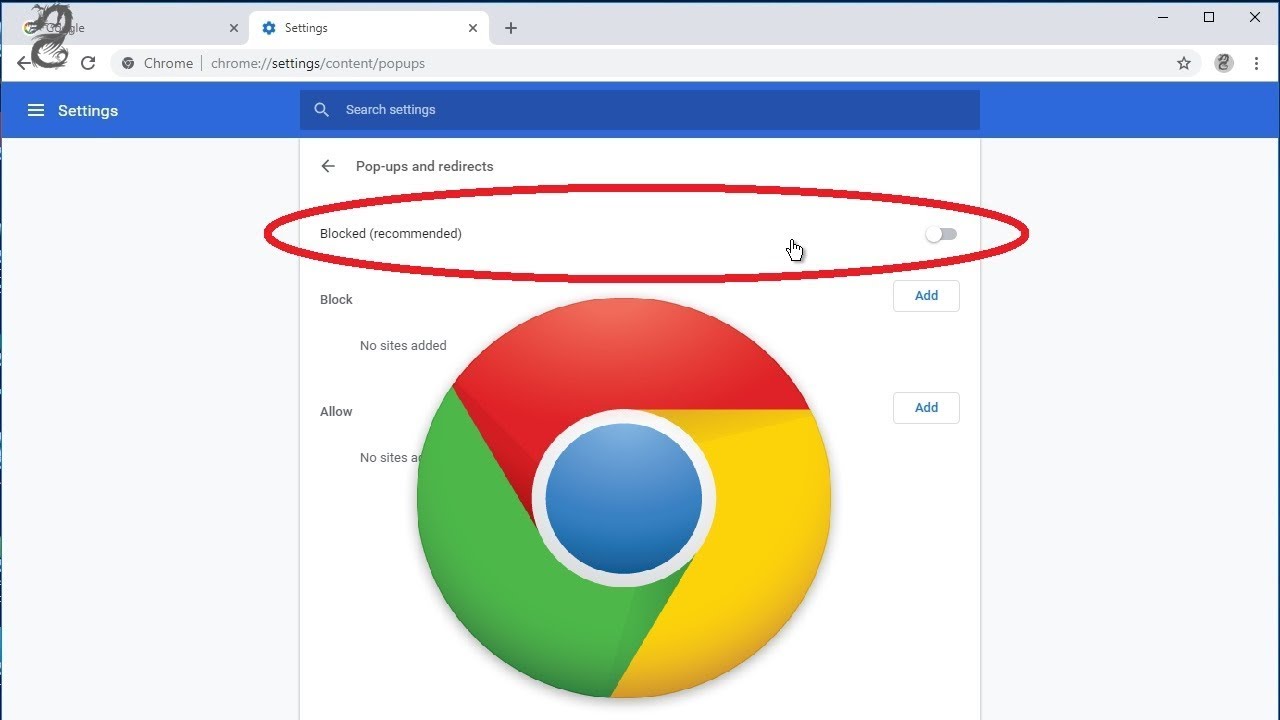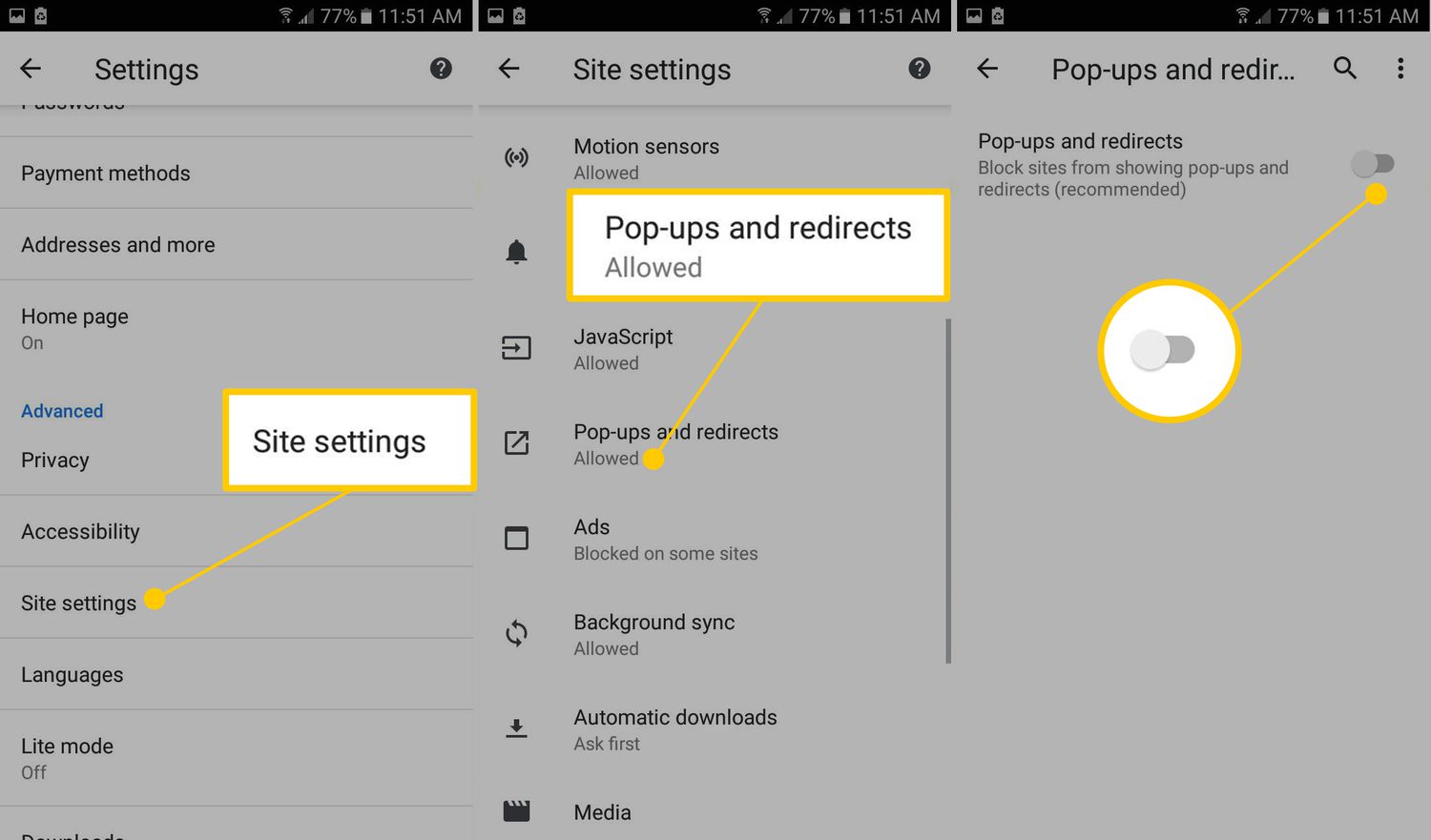Introduction
When it comes to browsing the web, Google Chrome stands out as one of the most popular and user-friendly web browsers. Its sleek interface, robust features, and seamless performance have made it a go-to choice for millions of users worldwide. However, despite its many advantages, Chrome users often encounter a frustrating issue: redirects. These unexpected and unwelcome detours to unfamiliar websites can disrupt the browsing experience and pose potential security risks.
In this comprehensive guide, we will delve into the intricacies of redirects on Chrome and equip you with the knowledge and tools to effectively combat this nuisance. Whether you're a casual internet surfer or a seasoned web enthusiast, understanding the causes of redirects and learning how to thwart them is essential for a smooth and secure browsing experience.
So, join us as we unravel the mysteries of redirects on Chrome and empower you with the insights and strategies to reclaim control of your browsing journey. Let's embark on this enlightening exploration to ensure that your online adventures are free from disruptive detours and filled with seamless navigation.
Understanding Redirects
Redirects are a common occurrence in the digital realm, and they play a pivotal role in the way websites and web browsers interact. In essence, a redirect is a process that automatically sends users from one URL to another. This mechanism is often employed by website owners and developers to ensure that visitors are directed to the most relevant or updated content. However, redirects can also be utilized for less benign purposes, such as driving traffic to malicious websites or deceptive landing pages.
There are several types of redirects, each serving a distinct purpose. The most common redirect status codes include 301, 302, and 307. A 301 redirect signifies a permanent move to a new URL, while a 302 redirect indicates a temporary relocation. On the other hand, a 307 redirect is similar to a 302 redirect but explicitly preserves the original request method.
Understanding the intricacies of redirects is crucial for discerning their impact on browsing experiences. When a redirect occurs, it can lead to a seamless transition to the intended destination, such as when a website undergoes a domain change or restructuring. However, redirects can also be wielded as tools for nefarious activities, such as phishing attempts, unauthorized tracking, or the dissemination of malware.
In the context of Google Chrome, redirects can manifest in various forms, including unexpected jumps to unrelated websites, automatic opening of new tabs or windows, and the display of intrusive pop-ups. These disruptions not only impede the user's browsing flow but can also compromise their online security and privacy.
By comprehending the nature of redirects and their potential implications, Chrome users can better equip themselves to identify and address these unwelcome diversions. Armed with this knowledge, individuals can take proactive measures to safeguard their browsing experiences and mitigate the risks associated with malicious redirects.
In the subsequent sections, we will delve into the common causes of redirects on Chrome and explore effective strategies to halt these disruptive maneuvers, empowering users to reclaim control of their online journeys.
Common Causes of Redirects on Chrome
-
Malicious Websites and Phishing Attempts: One of the primary culprits behind redirects on Chrome is the presence of malicious websites and phishing attempts. These nefarious entities often employ deceptive tactics to lure unsuspecting users into clicking on misleading links, which subsequently trigger redirects to fraudulent or harmful web pages.
-
Unwanted Browser Extensions: Certain browser extensions, though seemingly innocuous, can be responsible for initiating redirects on Chrome. These extensions, often installed without the user's full understanding of their functionalities, may contain code that triggers unauthorized redirects to specific websites, disrupting the user's browsing experience.
-
Adware and Malware Infections: Adware and malware infections can clandestinely infiltrate a user's system, causing unwanted redirects within the Chrome browser. These malicious entities may manipulate the browser's settings or inject code into web pages, leading to involuntary redirections to advertising-heavy or potentially dangerous websites.
-
Outdated Browser Settings: Outdated or misconfigured browser settings can also contribute to redirects on Chrome. In some cases, obsolete settings or cached data may inadvertently trigger redirects when attempting to access certain websites, leading to unexpected detours to unrelated or potentially harmful destinations.
-
Compromised Websites and Third-Party Scripts: Websites that have fallen victim to security breaches or unauthorized access can become sources of redirects on Chrome. Cybercriminals may exploit vulnerabilities in these compromised sites to inject malicious scripts, which can then trigger redirects when accessed through the Chrome browser.
-
Clickjacking Techniques: Clickjacking, a deceptive technique used to trick users into clicking on hidden elements on web pages, can lead to redirects on Chrome. By overlaying seemingly innocuous content with invisible or disguised elements that prompt unintended clicks, malicious actors can orchestrate redirects to external websites without the user's consent.
Understanding these common causes of redirects on Chrome is crucial for effectively addressing and mitigating this issue. By identifying the underlying factors contributing to unwanted redirections, users can take proactive measures to safeguard their browsing experiences and fortify their defenses against potential security threats.
How to Stop Redirects on Chrome
Addressing redirects on Chrome requires a multifaceted approach that encompasses proactive measures, diligent maintenance, and strategic utilization of built-in browser features. By implementing the following strategies, users can effectively thwart redirects and fortify their browsing experiences:
-
Update Chrome and Extensions: Keeping Chrome and its extensions up to date is essential for mitigating the risk of redirects. Regular updates often include security patches and bug fixes that address vulnerabilities exploited by malicious entities to trigger unwanted redirections.
-
Review and Remove Suspicious Extensions: Conduct a thorough review of installed extensions and remove any that raise suspicion or exhibit behavior indicative of unauthorized redirects. This proactive measure helps eliminate potential sources of unwanted redirections and enhances the overall security of the browsing environment.
-
Enable Pop-Up and Redirect Blocking: Chrome offers built-in features to block pop-ups and redirects. Users can access these settings by navigating to Chrome's "Site Settings" and configuring the pop-up and redirect permissions to restrict intrusive elements that may trigger unwarranted redirections.
-
Utilize Advanced Security Settings: Leveraging Chrome's advanced security settings, such as the "Safe Browsing" feature, can provide an additional layer of protection against malicious websites and deceptive content. Enabling this feature helps Chrome identify and warn users about potentially harmful sites, reducing the likelihood of falling victim to redirects stemming from malicious sources.
-
Scan for Adware and Malware: Conducting regular scans for adware and malware using reputable security software can help detect and remove potentially harmful entities that may be causing redirects within the Chrome browser. By maintaining a clean and secure system, users can minimize the risk of involuntary redirections resulting from malicious infections.
-
Clear Browsing Data and Reset Settings: Periodically clearing browsing data, including cookies, cached images, and site settings, can help eliminate outdated or misconfigured data that might contribute to unwanted redirects. Additionally, resetting Chrome settings to their default state can rectify any inadvertent configurations that may be triggering redirects.
-
Exercise Caution and Vigilance: Practicing caution while browsing and exercising vigilance when encountering unfamiliar or suspicious links can significantly reduce the likelihood of falling victim to redirects. Verifying the authenticity of websites and scrutinizing the legitimacy of links before clicking on them can serve as effective preventive measures.
By implementing these proactive strategies and leveraging Chrome's built-in security features, users can effectively mitigate the impact of redirects and bolster the security of their browsing experiences. This comprehensive approach empowers individuals to navigate the web with confidence, knowing that they are equipped to thwart unwanted redirections and safeguard their online interactions.
Conclusion
In conclusion, the prevalence of redirects on Google Chrome poses a significant challenge for users seeking uninterrupted and secure browsing experiences. The multifaceted nature of redirects, stemming from various sources such as malicious websites, unwanted browser extensions, adware, and compromised web entities, underscores the importance of proactive measures to combat this issue. By understanding the common causes of redirects and implementing effective strategies, users can reclaim control of their browsing journeys and fortify their defenses against potential security threats.
The proactive measures outlined in this guide, including the importance of updating Chrome and extensions, reviewing and removing suspicious extensions, and enabling built-in security features, serve as essential pillars in the fight against unwanted redirections. Furthermore, the emphasis on exercising caution and vigilance while browsing, coupled with the periodic clearing of browsing data and resetting of browser settings, empowers users to maintain a secure and seamless browsing environment.
It is imperative for Chrome users to remain vigilant and proactive in addressing redirects, as these unwelcome detours not only disrupt the browsing experience but also pose potential risks to online security and privacy. By staying informed about the evolving landscape of online threats and leveraging the robust features and security capabilities of Chrome, users can navigate the web with confidence and peace of mind.
Ultimately, the battle against redirects on Chrome is a collaborative effort between users and the browser itself. By staying informed, implementing best practices, and leveraging the available tools and features, users can effectively mitigate the impact of redirects and foster a safer and more enjoyable browsing experience. With a proactive mindset and a commitment to maintaining a secure digital environment, Chrome users can navigate the web with confidence, knowing that they are equipped to thwart unwanted redirections and safeguard their online interactions.

























